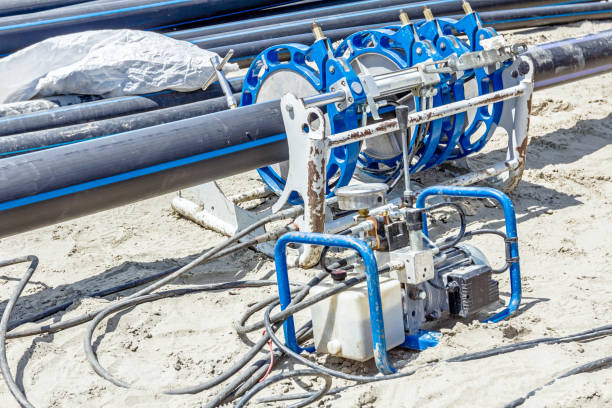When people ask what is fusion welding, they are referring to a specialized manufacturing process used to join two pieces of material—most commonly thermoplastics or metals—by applying heat, pressure, or a combination of both, until the surfaces of the materials melt and form a continuous, homogeneous joint upon cooling. Fusion welding is widely used in industries such as piping, construction, automotive, aerospace, and industrial fabrication, where strong, leak-proof, and durable joints are essential. The technique differs from mechanical fastening or adhesive bonding because it relies on molecular or metallurgical continuity between the joined parts, resulting in a bond that is often as strong as, or stronger than, the base material itself.

In the context of plastic fabrication, fusion welding involves heating the surfaces of thermoplastic materials such as polyethylene (PE), polypropylene (PP), or polyvinyl chloride (PVC) until they become soft and pliable. Once the material reaches the proper temperature, the parts are pressed together under controlled pressure, allowing the polymer chains to interpenetrate and create a strong molecular bond. This process is versatile and can be applied to pipe joining, sheet fabrication, tanks, and custom components. The main methods of plastic fusion welding include butt fusion, socket fusion, hot gas welding, extrusion welding, and electrofusion. Each method has unique equipment requirements, heating techniques, and pressure applications tailored to the material and product design.
For metallic materials, fusion welding operates on a similar principle, though the mechanisms differ slightly. The process typically involves heating the metal surfaces to a molten or semi-molten state using sources such as arc welding, laser welding, TIG welding, MIG welding, or resistance welding. Pressure may be applied in addition to heat, particularly in processes like hot pressure welding or forge welding, to ensure that the metals form a continuous crystalline bond upon cooling. Metal fusion welding is essential in applications where mechanical integrity and resistance to fatigue, corrosion, and high temperatures are critical, including pipelines, structural frameworks, and aerospace components.
The equipment used in fusion welding varies depending on the material and method. For plastics, machines may include temperature-controlled plates, heating sockets, hot air guns, extruders, or electrofusion units with embedded coils. For metals, welding setups can involve arc welding machines, TIG or MIG torches, laser systems, or resistance electrodes. Each setup requires precise control over temperature, pressure, alignment, and timing to ensure the quality and strength of the welded joint. Modern fusion welding systems often integrate sensors and automation to monitor these parameters in real time, reducing the risk of defects and improving consistency.
Preparation of materials is a critical step in the fusion welding process. Surfaces must be clean, dry, and free of oxidation, grease, or contaminants that could weaken the joint. In plastics, this may involve scraping or machining the surface to remove the oxidized layer before heating. For metals, cleaning and sometimes preheating are required to ensure proper flow and bonding of molten material. Accurate alignment of parts is also essential to prevent distortion, uneven thickness, or weak points in the finished weld.
Temperature control is a fundamental factor in fusion welding. If the material is overheated, it may degrade, burn, or lose mechanical properties. Conversely, insufficient heat prevents proper fusion, leaving weak joints. Each material has a recommended temperature range for welding: thermoplastics have specific melting points depending on their polymer type, and metals require precise molten states to achieve metallurgical bonding. Maintaining these parameters ensures a uniform joint with optimal mechanical strength and durability.
The advantages of fusion welding are numerous. The technique produces joints that are leak-proof, strong, and resistant to mechanical stress and environmental factors. Unlike mechanical fasteners, which may loosen or corrode, or adhesives, which may deteriorate over time, fusion welding forms a permanent bond that maintains material continuity. This is particularly important in high-pressure piping systems, chemical storage tanks, and critical structural components. Fusion welding also allows for continuous lengths of joined material, reducing the number of joints and minimizing potential failure points.
However, fusion welding also presents challenges and considerations. The process requires skilled operators, precise equipment, and careful monitoring to avoid defects such as voids, inclusions, misalignment, or thermal degradation. For plastics, ventilation and fume extraction are critical because overheating can release hazardous gases. For metals, safety measures such as shielding gas, protective clothing, and eye protection are essential to prevent injury from sparks, ultraviolet light, or molten material.
Fusion welding is widely used across industries. In the water and gas piping sector, butt and electrofusion welding of PE and PVC provide seamless connections capable of withstanding high pressures. In automotive manufacturing, plastic and metal components are fusion welded to ensure structural integrity and performance. Aerospace applications rely on precise metal fusion welding to meet strict safety and performance standards, while chemical and food processing industries use fusion welding to fabricate tanks, pipelines, and containment systems resistant to corrosion and leaks.
Technological advancements continue to improve the efficiency and quality of fusion welding. Automation, computer-controlled heating systems, real-time monitoring, and specialized welding heads allow for faster production, reduced defects, and higher repeatability. Additionally, research into new polymer blends and metal alloys expands the range of materials that can be effectively welded using fusion techniques, enhancing design possibilities and industrial applications.
Overall, fusion welding is a versatile, reliable, and essential manufacturing process. By joining materials at the molecular or metallurgical level, it produces strong, durable, and leak-proof components suitable for demanding applications in industrial, commercial, and residential contexts. Proper material selection, preparation, equipment calibration, and operator skill are all critical factors that determine the success and longevity of the welded assembly, making fusion welding an indispensable technique in modern manufacturing.


